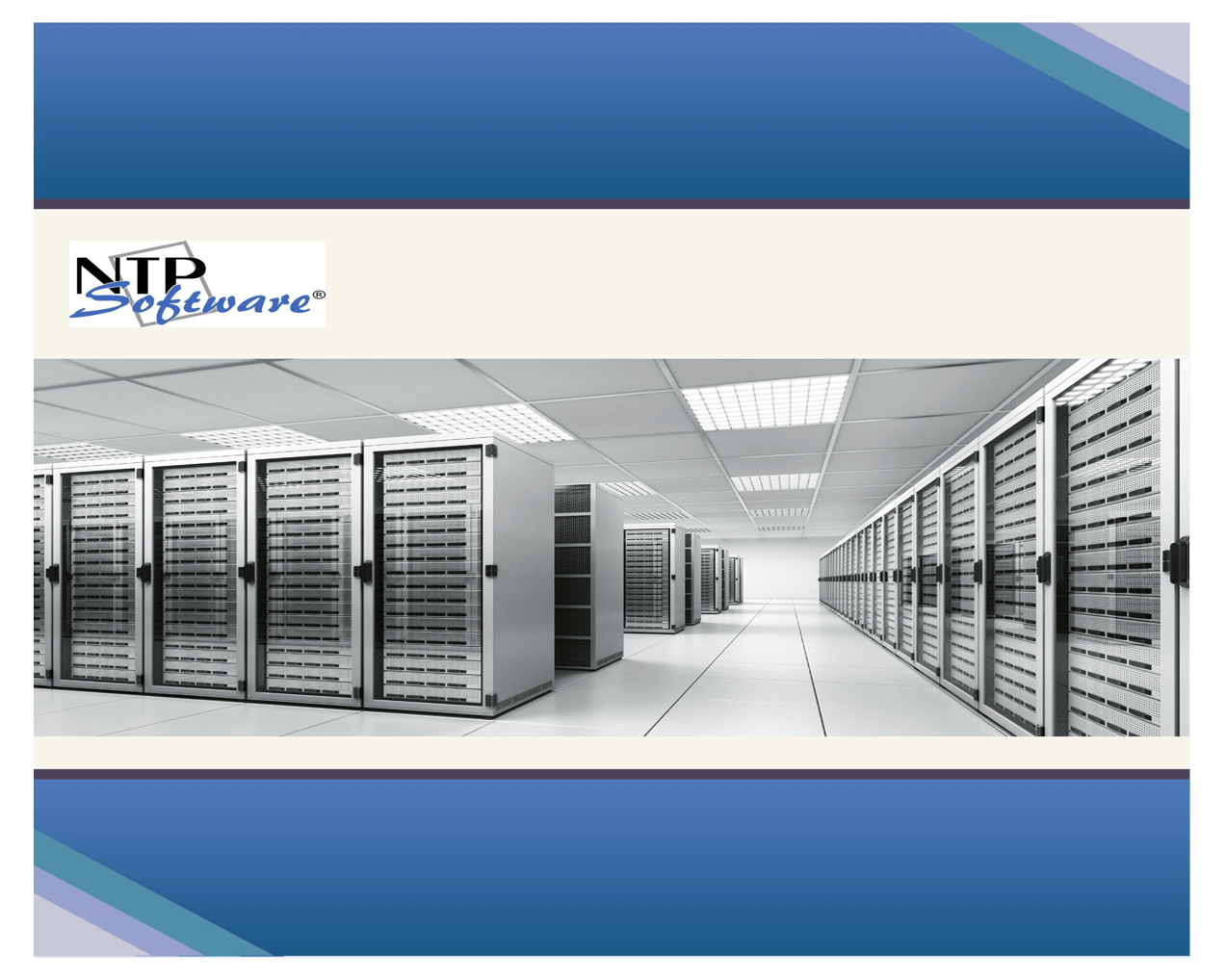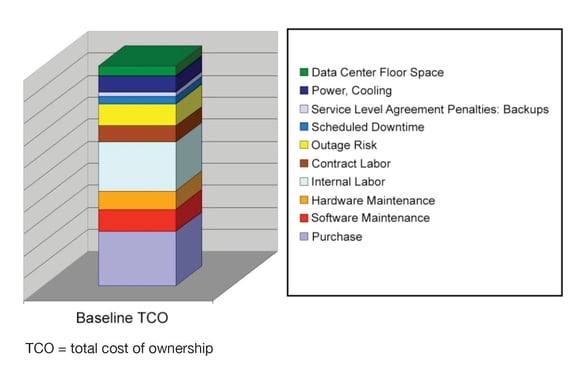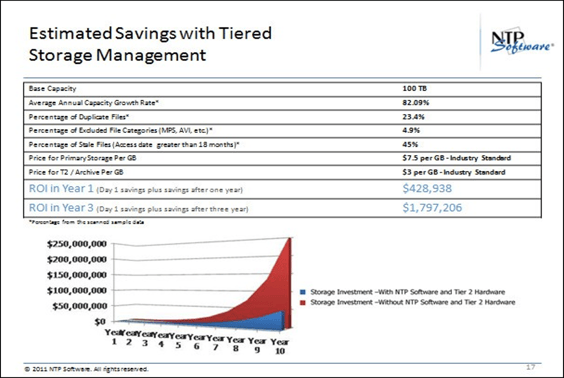It’s an interesting question because it involves a simple juxtaposition of four words. How important can that possibly be?

However, the order of those words is critical when we examine the answers in the light of IT budgets capital (CapEx) and operational expenses (OPEX) regarding their relationship to technology costs and return on investment (ROI).
Yes, the business of storing and retrieving data has entered the business realm of having to prove its worth to the corporate enterprise. It’s a rather unorthodox arrangement to figuring out ROI but it does reveal some insightful facts about the cost and value of doing file data storage the right way.
Data Management versus Resource Management
The bottom line here is that if you let data accumulate unchecked, it is destined to grow to 67 times what you have now in a short period of time. That puts your company in the business of doing resource management because you have to buy more and more devices to store data on as well as hire more people to manage it (backup and storage) and more real estate where all those new devices can live in air-conditioned and environmentally controlled splendor.
But, I’m being facetious. It is much better from the cost point of view to manage the data as a first priority to control the growth rather than just keep buying more storage devices until you’re in the business of data warehousing rather than software development or whatever the primary thrust of your company is. This has a name and it’s called File Data Management (FDM). There is an industry built around providing the technology and solutions to make it possible for your company to do that function well. NTP Software has an excellent resource to walk you down that path called “A Guide to Comprehensive File Data Management.” The logic and reasoning in the white paper are both insightful and eye-opening and worth the time to fully comprehend. Just as a sort of teaser to show you what I mean, the chart below shows you the results of a case study presented in the paper.
Those are numbers you can’t just ignore. The discussion of what it means to develop a tiered storage management solution of primary, secondary and archive storage is the key to the success of doing FDM and getting out of the resource management dilemma.

The Cost of File Data Storage – The Rest of the Story
What we see in the example is the cost savings to IT represented as an ROI to the company. You can’t argue with the numbers but to understand the total cost of ownership (TCO) issue, let’s briefly dig just a bit deeper into what capital expenditures and operational expenditures really are. A study was performed that broke down the costs to a much more granular level in identifying 34 cost elements to the data storage effort. You can read about the entire study here. A quote from the executive summary of that report is revealing:
“Pressure on capital expenditures (CapEx) and operational expenses (OPEX) will likely continue; technologists must look beyond lowering acquisition costs and search for additional savings. As pressures mount to reduce not only CapEx spending but, even more vitally, OPEX, IT organizations will need to make business cases. These cases will help them to gain management support for both strategic and tactical investments.”
The chart below, from the referenced report, provides some insight into the categorization of those 34 TCO cost elements. The key point of this study is the price does not equal cost. It goes deeper than that. It proves the NTP Software approach that you must understand the data and not just worry about how much the devices to store data on cost. TCO is much deeper than that.

Technology and Cost
There is much to be said about improving the technology that powers File Data Management and the devices it lives on. The Storage Networking Industry Association (SNIA) developed a comprehensive discussion on the effects technology can have on reducing CaPex and OPEX costs. You can read the full presentation here. It is focused on acquisition planning and digs deeply into what needs to be done to reign in costs related to both capital and operational expenses.
Power consumption is a large piece of the OPEX cost structure and as you might suspect, green technologies play an important part in controlling those costs. Federal and state regulation comes into play as well with cost advantages to businesses being available via the Energy Star regulations associated with buying the right equipment. Power alone can absorb $800K and more of the IT budget in any given year and the cost of power will only rise over time. Power usage effectiveness (PUE) is a key metric to track how much power goes to productive use (server function) and how much is used for overhead (cooling, exhaust fans and the like) expenses.
Conclusion
Managing costs is a systems challenge in the final analysis. FDM is the linchpin of the system in being able to control capital and operational expenses given that the amount of data to be stored, drives facility, staffing, and device costs directly. Understand your data well so that you know what needs to be stored and at what tiering level. The cost of primary storage is significantly higher than the cost of secondary and archive storage mostly due to the technologies involved. Deduplication of data and the virtualization of access to the information can take the 67 times multiplier of your future creation of data and drive it down significantly which in turn means fewer devices and reduced staffing. Controlling the root cause of cost, the volume of data, will have a big impact on CaPex and OPEX.







